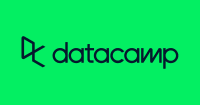Description
In this course, you will :
- Explain the seven advantages of budgeting for a business.
- Examine various budgeting approaches.
- When budgeting, summarise the need for information.
- When budgeting, identify information sources.
- Costs can be classified in a variety of ways.
- Make a standard cost card.
- Determine the fixed and variable costs.
- Determine the distinctions between fixed, flexible, and flexed budgets.
- Calculate forecasts using a variety of methods
- Calculate variances using appropriate methods
- Identify the difference between adverse and favourable variances
- Calculate functional budgets
- Identify the information needed to set functional budgets
- Demonstrate how to include different types of receipts and payments in a cash budget
- Calculate receivables, payables and discounts
- Identify the limiting factor using calculations
- Demonstrate an understanding of practical budgeting
Syllabus :
- Introduction to Business Budgeting
- Budget Forecasting, Costing, and Variances
- Budgeting: How to Prepare a Cash and Functional Budget
- Budgeting: Final Assessment









